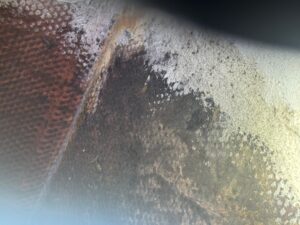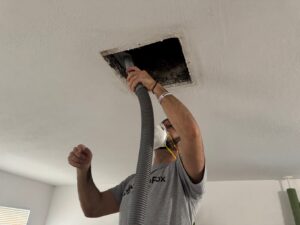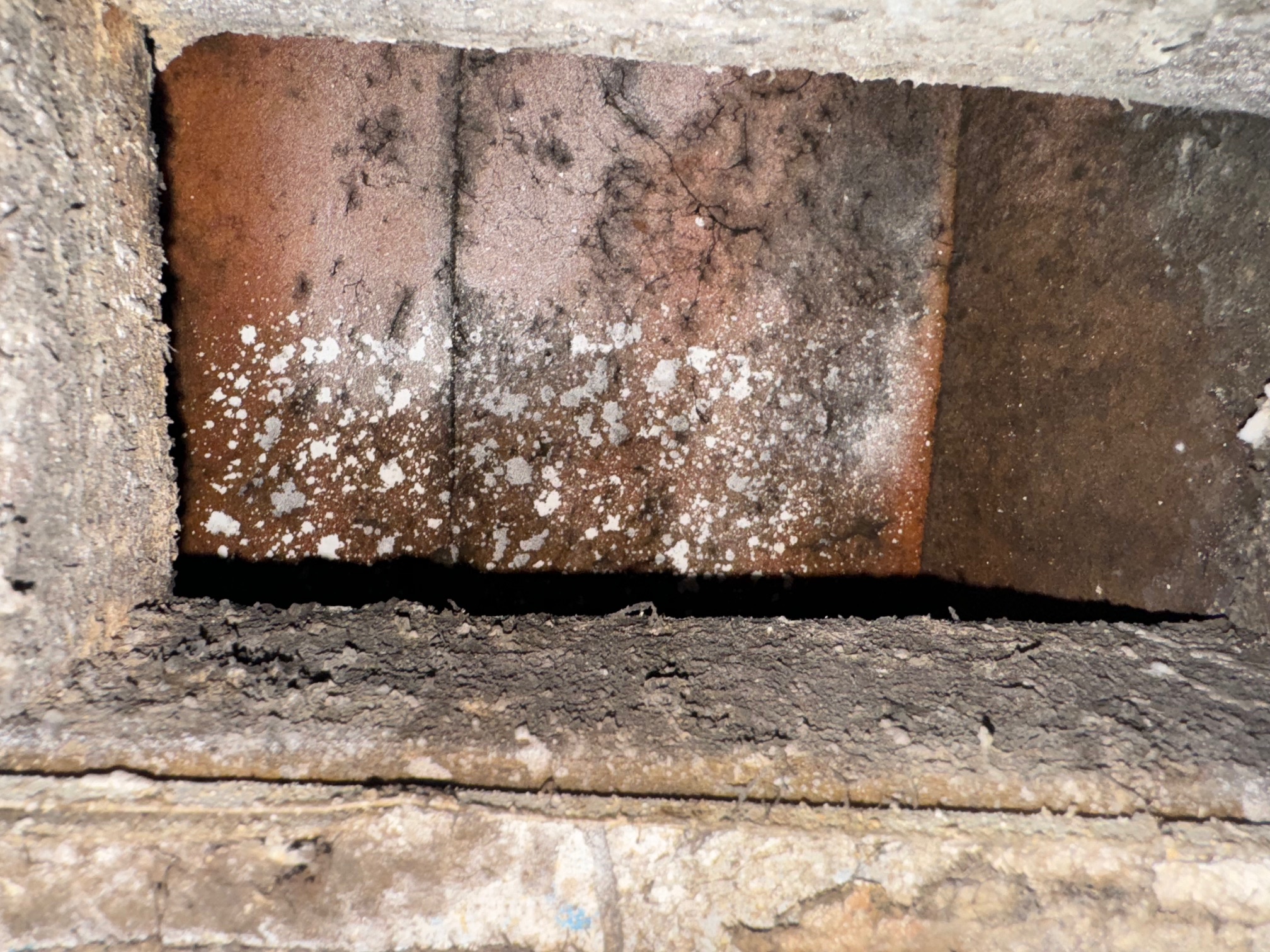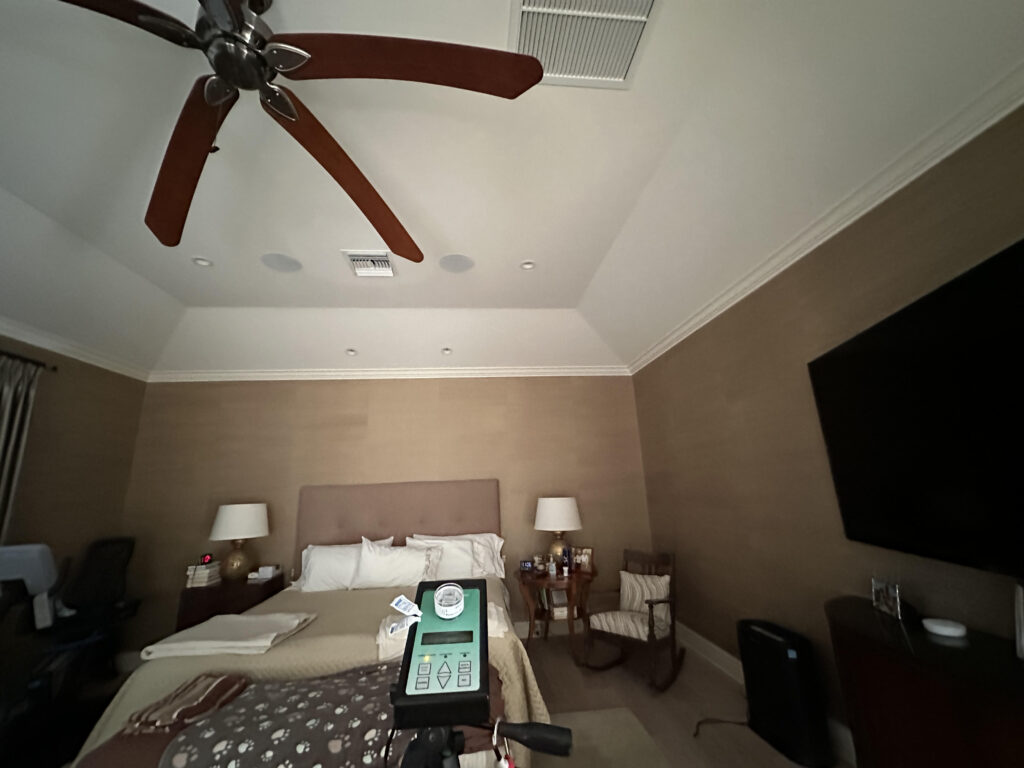One of the most common places for mold to grow within a home is inside the HVAC ductwork. Well, technically it will usually grow on the dust and debris within the ductwork. Mostly all ductwork is going to have some form of mold present, but how much is too much? Usually, we look at our government agencies to determine how much of something exceeds the maximum allowed. A few example we look at the FDA for how much hormones we have in our food. Well in regards to HVAC, that raises the question, are there government limits on mold in air conditioning ductwork? In this article, we are going to explore if there are any kind of limits and who would be responsible for setting limits.
GOVERNMENT LIMITS ON MOLD IN HVAC DUCTWORK
Currently, there are no government limits on how much mold should or shouldn’t be in air conditioning ductwork. However, that does not mean that there are no specific guidelines. Multiple organizations teach industry standards on HVAC duct cleaning. There are also some jurisdictions of the USA that have state and local guidelines in place. While some local jurisdictions have different protocols than others, the overall theme is the same, the HVAC ductwork should be regularly inspected and cleaned if there is visible mold present. The two main government agencies that advise the public on mold within HVAC systems and ductwork are The Environmental Protection Agency (EPA) and The Occupational Safety and Health Administration (OSHA).
EPA and Mold in The HVAC System
The EPA was established to keep the public safe from environmental hazards. One of those hazards is mold in the home. Now, the EPA’s standards for mold in a home are broad and much more focused on preventing mold growth by controlling moisture as opposed to cleaning mold. The EPA tends to shy away from neither recommending nor advising against having HVAC ducts cleaned on a regular basis. In 1997, the EPA released a paper in regards to having your air ducts cleaned for mold growth. Their stance has not changed on it as the document is still present on their database. While the EPA doesn’t advise getting your ductwork cleaned routinely, there are some instances where they recommend you consider having them cleaned:
- Visible mold is present
- The Ductwork has been infested with rodents
- The HVAC duct system is clogged with dust and debris
One recommendation that the EPA makes compared to some of the other industry organizations that we will talk about later, is the removal of insulation in ductwork. The EPA says that if you have insulation present within your ductwork (such as fiberglass ductboard) it should be removed as opposed to being cleaned. The paper does kind of contradict itself as later on it discusses that chemical biocides or sealants may be used to sanitize ductwork under “specific circumstances”, there is no specific chemical biocide that is registered to be used specifically in ductwork by the agency.
It’s worth reading the whole EPA paper on mold within the ductwork as there is lots of good information in it, but there are no clear-cut government threshold limits present.

OSHA and Mold in The HVAC System
While OSHA has many guidelines on how to properly remove/clean mold, they don’t necessarily make any claims on what type of substances are hazardous. What they were established to do is to determine how to remove the actual substances that the EPA determines are hazardous. OSHA even states on their website:
If you suspect that the HVAC system is contaminated with mold, or if mold is present near the intake to the system, contact the National Air Duct Cleaners Association (NADCA), or consult EPA’s guide, “Should You Have the Air Ducts in Your Home Cleaned?” before taking further action. Do not run the HVAC system if you know or suspect that it is contaminated with mold, as it could spread contamination throughout the building.
That is about the extent of OSHA’s information in regards to determining how much mold is too much in your ducts.
State and Local Regulations For Mold In The Ductwork
While federal regulations do not set specific mold limits in AC ductwork, some state and local jurisdictions have enacted their own standards and guidelines. For example:
- California: California has more stringent regulations regarding indoor air quality and mold than many other states. The California Department of Public Health (CDPH) provides recommendations for managing mold, which include assessing and addressing mold problems but does not set explicit limits for mold levels in ductwork.
- New York City: The New York City Department of Health provides guidelines for mold remediation and emphasizes the need to control moisture and promptly address any mold growth. New York City Department of Health’s guidelines are widely considered the best local guidelines. Many trade organizations use it as a guideline. The city does not have specific standards for mold levels in ductwork but provides detailed procedures for remediation.
- Florida: The state of Florida has an in depth standard of practice for mold professionals but like the other states, there is nothing in regard to threshold limits. The Florida Standards of Practice is more concentrated on covering the HVAC system during mold remediation to prevent cross-contamination within the HVAC ducts as opposed to cleaning them.
Industry Standards and Recommendations
Industry organizations and standards-setting bodies have developed guidelines that, while not legally binding, offer valuable insights into best practices for managing mold in air conditioning
American Society of Heating, Refrigerating, and Air-Conditioning Engineers (ASHRAE)
ASHRAE, a leading organization in the HVAC industry, provides guidelines for indoor air quality and system maintenance. ASHRAE’s Standard 62.1, which deals with ventilation for acceptable indoor air quality, includes recommendations for maintaining HVAC systems to prevent contamination, including mold. While ASHRAE does not specify acceptable levels of mold, its guidelines emphasize regular maintenance and cleaning to prevent mold buildup in ductwork.
National Air Duct Cleaners Association (NADCA)
The National Air Duct Cleaners Association (NADCA) is a professional association that provides standards for duct cleaning. NADCA is probably the most aggressive organization in regards to recommending duct cleaning NADCA’s guidelines focus on maintaining cleanliness in air duct systems and recommend addressing any visible mold contamination immediately. NADCA also does not set specific mold limits but advocates for thorough cleaning practices to ensure that duct systems remain free of mold and other contaminants. You can find NADCA’s list of professional duct cleaners here.

Conclusion
All of these government agencies and industry organizations have one thing in common:
They don’t list any government limits on mold in air conditioning ductwork. All of them, however, indicate it’s not a good thing to have mold growing in your ducts. It is important to have your ducts cleaned as needed. If you are unsure whether you have mold growing in your ducts, it is best to have the ducts checked by a licensed professional that know what they are looking for.


